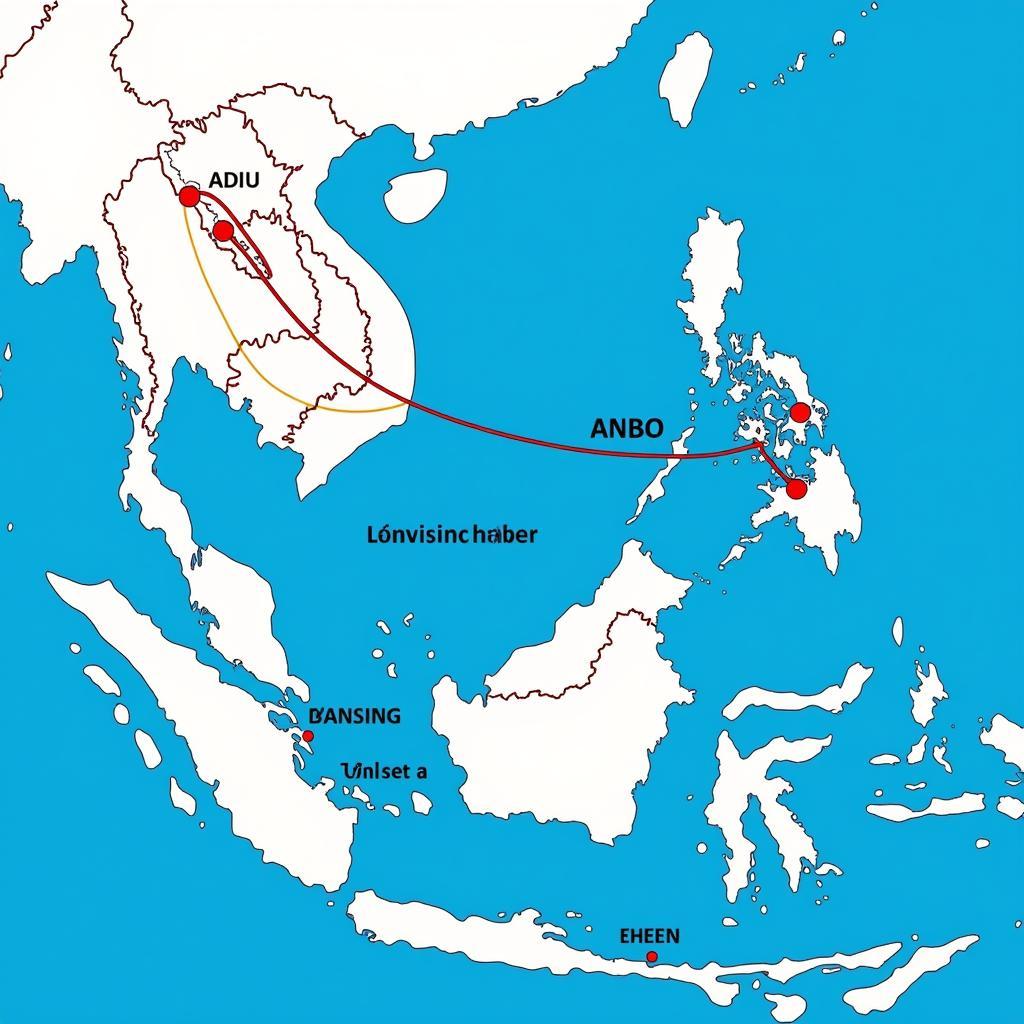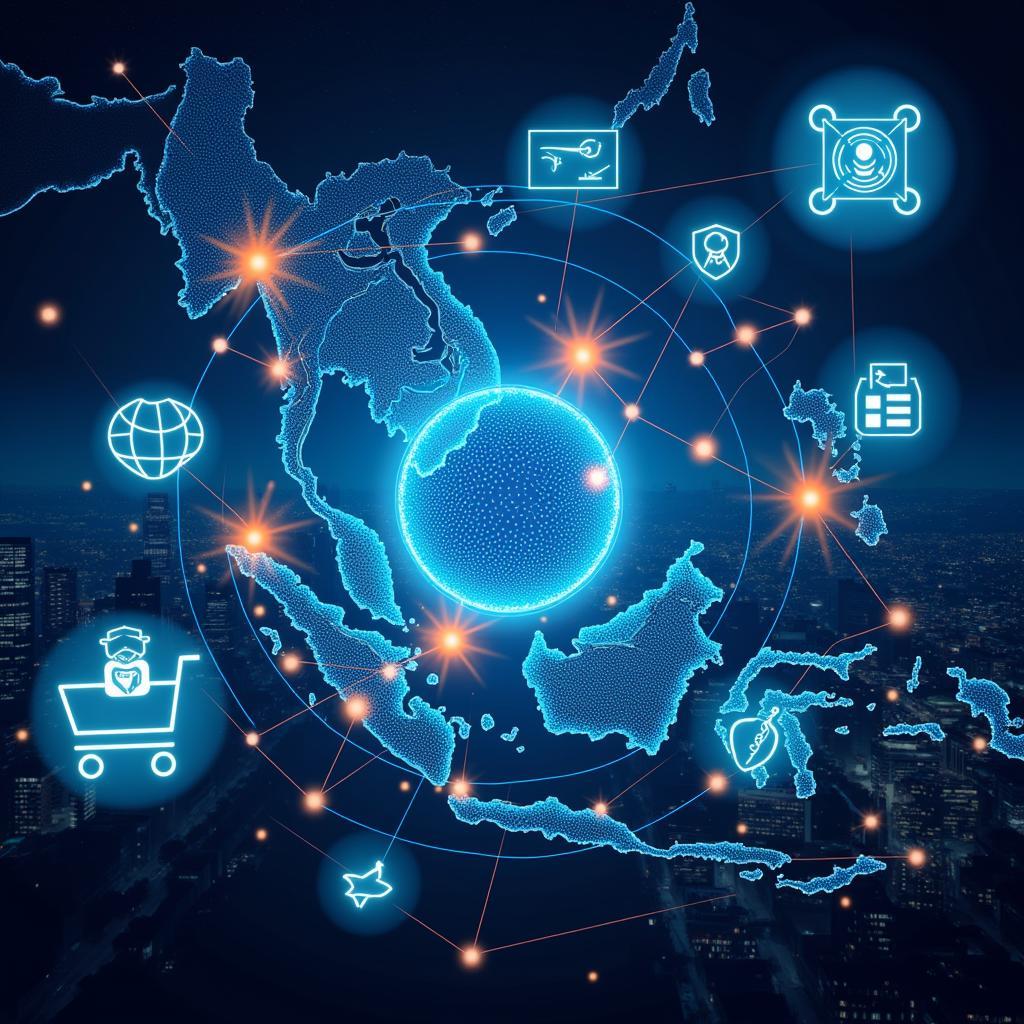The ASEAN cable segment represents a critical piece of the region’s digital infrastructure, facilitating connectivity and driving economic growth. This article delves into the complexities of the ASEAN cable segment, exploring its significance, challenges, and future prospects. After reading this, you’ll have a deeper understanding of the vital role submarine cables play in connecting Southeast Asia to the world.
The Importance of the ASEAN Cable Segment
The ASEAN region is experiencing rapid digital transformation, with internet penetration soaring and data consumption increasing exponentially. This growth relies heavily on robust and reliable international connectivity, which is primarily provided by the ASEAN cable segment, a network of submarine cables crisscrossing the seabed. These cables carry vast amounts of data, enabling everything from video streaming and online gaming to e-commerce and financial transactions. They are the invisible backbone of the digital economy, fostering regional integration and enabling businesses to thrive in the global marketplace. For example, the increased connectivity facilitated by the cable segment allows small and medium-sized enterprises (SMEs) in ASEAN countries to access international markets and participate in the global economy. This enhanced connectivity is crucial for boosting trade, investment, and overall economic development within the region. Want to learn more about ASEAN’s sociocultural blueprint? Visit asean blueprint sociocultural.
 ASEAN Cable Map Showing Connectivity
ASEAN Cable Map Showing Connectivity
Challenges and Opportunities in the ASEAN Cable Segment
While the ASEAN cable segment plays a crucial role, it also faces several challenges. One key concern is the security and resilience of these cables. Given their vulnerability to natural disasters and potential sabotage, ensuring their protection is paramount. Furthermore, the increasing demand for bandwidth requires continuous investment in new cable systems and upgrades to existing infrastructure. Meeting this demand is essential to avoid bottlenecks and maintain the region’s digital competitiveness. However, these challenges also present opportunities. Investing in new cable technologies, such as high-fiber-count cables, can significantly enhance capacity and reduce latency. Moreover, fostering collaboration among ASEAN member states and international partners can improve cable security and resilience. The future of ASEAN’s interconnected digital landscape depends heavily on a proactive and sustainable approach towards the ASEAN cable segment. Take a closer look at ase test limited for more relevant information.
What are the key threats to the ASEAN cable segment?
Natural disasters, such as earthquakes and typhoons, pose a significant threat to submarine cables. Accidental damage from fishing activities and ship anchors is another concern.
The Future of the ASEAN Cable Segment
The future of the ASEAN cable segment looks promising, with ongoing investments and technological advancements driving further growth. The development of new cable landing stations and the deployment of advanced cable technologies will significantly enhance capacity and improve connectivity across the region. Moreover, increased collaboration between governments, telecommunications companies, and international organizations will play a vital role in ensuring the long-term sustainability and resilience of the ASEAN cable segment. This collaborative effort will help to address the challenges and capitalize on the opportunities presented by the rapidly evolving digital landscape. Learn more about ASEAN UTH at asea uth.
How will 5G impact the ASEAN cable segment?
The rollout of 5G networks will dramatically increase data traffic, requiring substantial upgrades and expansion of the ASEAN cable segment to meet the growing demand for bandwidth.
Expert Insight: “The ASEAN cable segment is a critical enabler of the region’s digital economy,” says Dr. Anya Sharma, a leading expert in telecommunications infrastructure. “Investing in its future is essential for maintaining ASEAN’s competitiveness in the global digital landscape.”
Conclusion
The ASEAN cable segment is an indispensable part of the region’s digital infrastructure, enabling connectivity, fostering economic growth, and facilitating regional integration. Addressing the challenges and seizing the opportunities within the ASEAN cable segment will be crucial for ensuring its continued success and supporting the region’s digital transformation. By investing in new technologies, strengthening regional cooperation, and prioritizing cable security, ASEAN can unlock the full potential of its digital economy and secure its position as a global leader in the digital age. Understanding the intricacies of the ASEAN cable segment is critical for anyone interested in the region’s technological and economic future. You might also be interested in checking out ASEAN car sales data: asean car sales 2019.
 Digital ASEAN Future with Connectivity
Digital ASEAN Future with Connectivity
FAQs
- What is the ASEAN cable segment?
- Why is the ASEAN cable segment important?
- What are the main challenges facing the ASEAN cable segment?
- How can the security of the ASEAN cable segment be improved?
- What is the future outlook for the ASEAN cable segment?
- How does the ASEAN cable segment contribute to economic growth?
- What role do international partnerships play in the development of the ASEAN cable segment?
Common Scenarios and Questions
- Scenario: A business in Singapore wants to expand its operations to other ASEAN countries. Question: How can the ASEAN cable segment support this expansion?
- Scenario: A natural disaster disrupts a major cable in the ASEAN region. Question: What are the contingency plans to ensure continued connectivity?
- Scenario: An ASEAN country wants to attract foreign investment in its digital sector. Question: How can the reliability of the ASEAN cable segment be showcased to potential investors?
Further Exploration
For more information about ASEAN’s digital economy and related topics, you can explore the following resources:
Contact Us
For assistance or further inquiries, please contact us at Phone Number: 0369020373, Email: [email protected], or visit our office at Ngoc Lien Village, Hiep Hoa, Bac Giang, Vietnam. We have a 24/7 customer support team.
